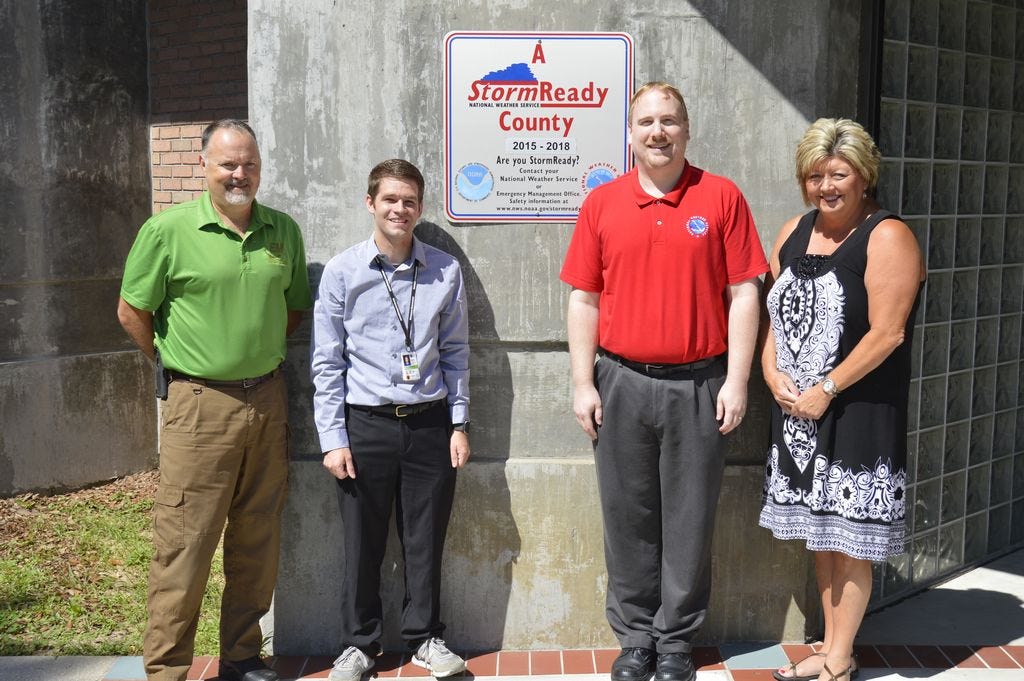
MILTON — Hurricanes are a potential threat in Santa Rosa County and the Gulf Coast.
However, local officials are ensuring a plan is in place for another type of natural disaster: a tsunami.
In 2001, the National Weather Service and the National Tsunami Hazard Mitigation Program, or NTHMP, established a TsunamiReady program to promote tsunami preparedness.
Brad Baker, the emergency management director for Santa Rosa County, said tsunami preparedness is similar to the StormReady program, which deals with preparing for extreme weather and water events.
While Santa Rosa and neighboring counties are already listed as StormReady, being certified as TsunamiReady would not only be a first for Santa Rosa County, but for the region.
“This is the first county on the entire Gulf Coast which has been working on their TsunamiReady certification,” said Chayne Sparagowski, a Gulf Coast representative with NTHMP.
Sparagowski said there has been interest from surrounding counties, including Escambia and Okaloosa in participating in the program, which include several components.
“Warning and notification is one of them,” he said. “Awareness and public education is probably the other big factors.”
According to the TsunamiReady website, guidelines for the certification include:
●Defining tsunami inundation areas, producing evacuation maps and installing evacuation route signs
●Supporting tsunami public education and outreach, including to schools in tsunami inundation zones
●Establishing a 24-hour warning point and supporting emergency operations center operations
●Having more than one way to receive tsunami warnings and to alert the public
●Developing a formal tsunami operations plan and holding annual exercises
Baker said his department has previously held preparedness discussions, organizing an action plan with area law enforcement agencies and first responders, along with public forums on tsunami preparedness.
Should a tsnumai — or a long, high sea wave caused by an earthquake or other disturbance — occur, officials said emergency personnel would have a limited time to react.
“With a storm surge from a hurricane, we know it’s coming,” Baker said. “(With a tsunami) we may have an hour or an hour and half to get people up and off.”
Sparagowski said the entire Gulf Coast region could have a maximum of up to four hours prior to an tsunami’s impact.
“It’s a very short window for notification and evacuation,” he said. NWS representative Jason Beaman agreed, saying, “While still a low probability, it’s still a threat.”
The likelihood of a tsunami is rare in our region, but Beamon said research from Texas A & M University at Galveston suggests such an event is possible.
“While we don’t have the traditional earthquake threat, which is naturally what you think about with tsunamis, there was these underwater landslides that was identified as a potential source region for a tsunami in the Gulf (of Mexico),” he said. “Now there has even been some inundation mapping that has been produced for Santa Rosa County.”
The preparedness process also helped the department identify and address another emergency related issue unrelated to tsunamis.
“People visiting did not know their location, so we put (location information) on top of the (tsunami awareness) signs,” Baker said.
While working with Escambia County officials, the emergency management office identified area beaches with similar to mile markers along the interstate.
“We started at the state line and worked our way east and mile markered … every segment of the beach,” Baker said. “So, when (individuals) call 911, if they read the sign, they will know where they are at.”
A three-person TsunamiReady assessment team consisting of Beaman, Sparagowski and Wanda Stafford, the Regional 1 Coordinator for Florida’s Division of Emergency Management reviewed each aspect of the county’s preparedness plan on Tuesday.
Baker said the department will address a few minor changes toward their plan at the suggestion of the team and will soon submit for certification.
This article originally appeared on Santa Rosa Press Gazette: Santa Rosa County officials work toward tsunami preparedness
